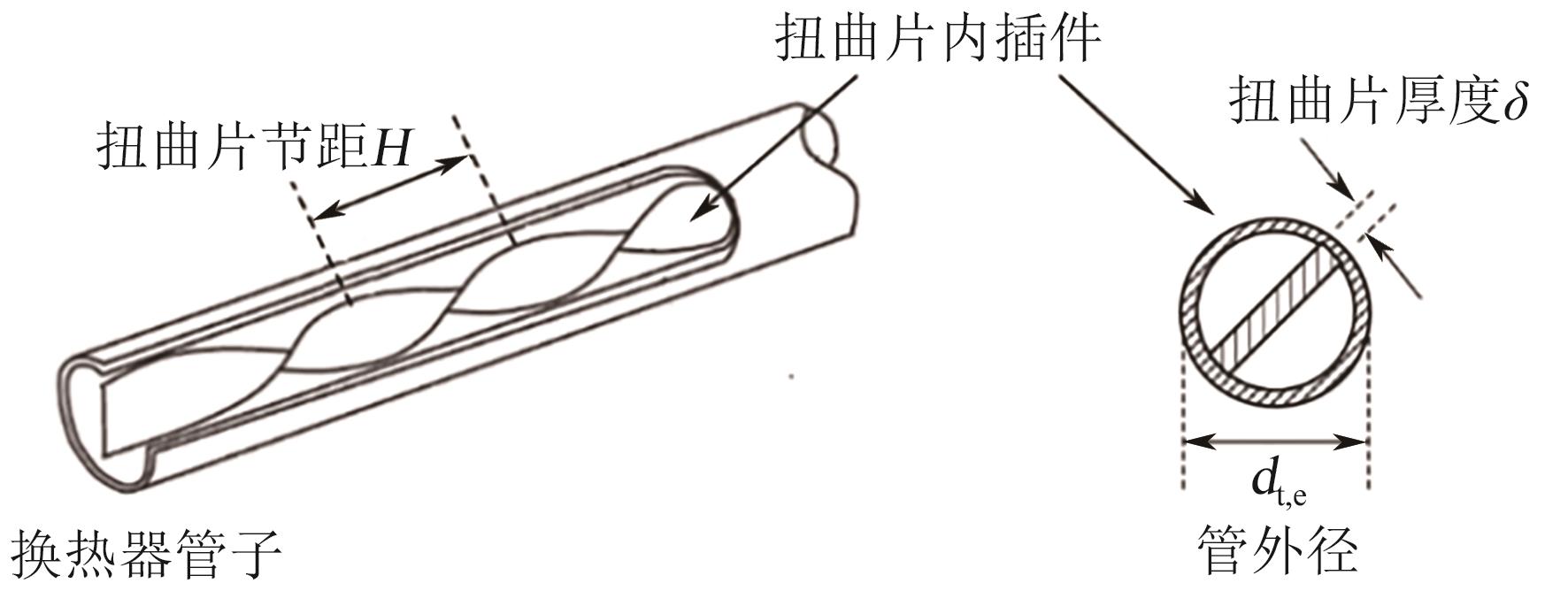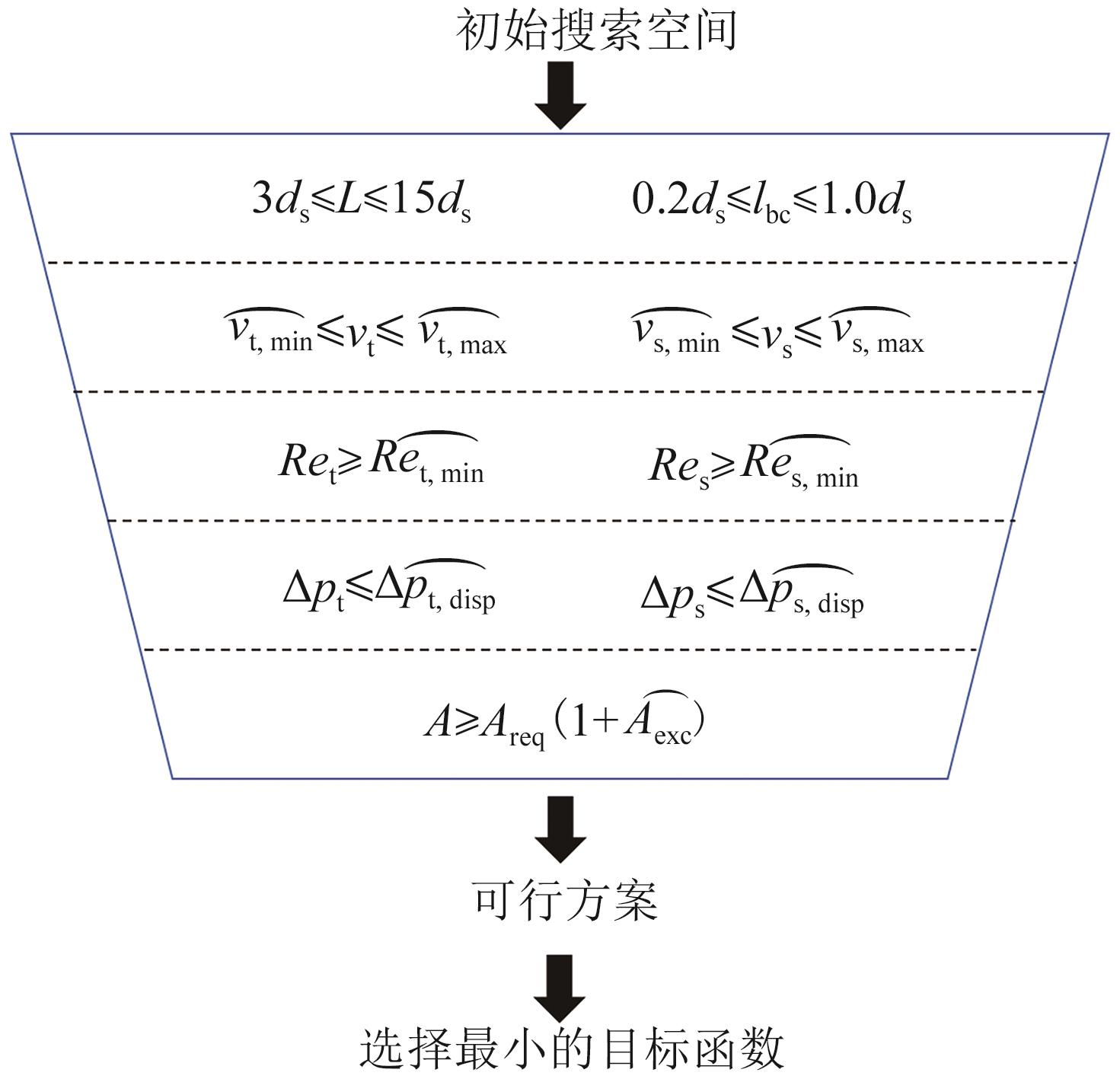| 1 |
HE Yong, LIAO Nuo, LIN Kunrong. Can China’s industrial sector achieve energy conservation and emission reduction goals dominated by energy efficiency enhancement? A multi-objective optimization approach[J]. Energy Policy, 2021, 149: 112108.
|
| 2 |
王晓东. 管壳式换热器传热的模拟研究及其优化分析[D]. 沈阳: 东北大学, 2012.
|
|
WANG Xiaodong. Analysis of simulation and optimization on heat transfer in shell-and-tube heat exchanger[D]. Shenyang: Northeastern University, 2012.
|
| 3 |
王志伟. 管壳式换热器壳程折流部件的传热性能研究[D]. 大庆: 东北石油大学, 2021.
|
|
WANG Zhiwei. Study on the structural design and heat transfer performance of a new type of baffle unit[D]. Daqing: Northeast Petroleum University, 2021.
|
| 4 |
Philippe WILDI-TREMBLAY, GOSSELIN Louis. Minimizing shell-and-tube heat exchanger cost with genetic algorithms and considering maintenance[J]. International Journal of Energy Research, 2007, 31(9): 867-885.
|
| 5 |
Resat SELBAŞ, Önder KıZıLKAN, REPPICH Marcus. A new design approach for shell-and-tube heat exchangers using genetic algorithms from economic point of view[J]. Chemical Engineering and Processing: Process Intensification, 2006, 45(4): 268-275.
|
| 6 |
KHALFE Nadeem, LAHIRI Kumar, WADHWA Kumar. Simulated annealing technique to design minimum cost exchanger[J]. Chemical Industry and Chemical Engineering Quarterly, 2011, 17(4): 409-427.
|
| 7 |
RAVAGNANI Mauro A S S, SILVA Aline P, BISCAIA Evaristo C, et al. Optimal design of shell-and-tube heat exchangers using particle swarm optimization[J]. Industrial & Engineering Chemistry Research, 2009, 48(6): 2927-2935.
|
| 8 |
PATEL V K, RAO R V. Design optimization of shell-and-tube heat exchanger using particle swarm optimization technique[J]. Applied Thermal Engineering, 2010, 30(11/12): 1417-1425.
|
| 9 |
ŞENCAN ŞAHIN Arzu, Bayram KıLıÇ, Ulaş KıLıÇ. Design and economic optimization of shell and tube heat exchangers using Artificial Bee Colony (ABC) algorithm[J]. Energy Conversion and Management, 2011, 52(11): 3356-3362.
|
| 10 |
KHOSRAVI Rihanna, KHOSRAVI Abbas, NAHAVANDI Saeid. Assessing performance of genetic and firefly algorithms for optimal design of heat exchangers[C]//2014 IEEE International Conference on Systems, Man, and Cybernetics (SMC). San Diego, CA, USA. IEEE, 2014: 3296-3301.
|
| 11 |
ONISHI Viviani C, RAVAGNANI Mauro A S S, CABALLERO José A. Mathematical programming model for heat exchanger design through optimization of partial objectives[J]. Energy Conversion and Management, 2013, 74: 60-69.
|
| 12 |
GONÇALVES Caroline de O, COSTA André L H, BAGAJEWICZ Miguel J. Shell and tube heat exchanger design using mixed-integer linear programming[J]. AIChE Journal, 2017, 63(6): 1907-1922.
|
| 13 |
MANGLIK R M, BERGLES A E. Heat transfer and pressure drop correlations for twisted-tape inserts in isothermal tubes: Part I—Laminar flows[J]. Journal of Heat Transfer, 1993, 115(4): 881-889.
|
| 14 |
SARMA P K, KISHORE P S, RAO V Dharma, et al. A combined approach to predict friction coefficients and convective heat transfer characteristics in a tube with twisted tape inserts for a wide range of Re and Pr [J]. International Journal of Thermal Sciences, 2005, 44(4): 393-398.
|
| 15 |
SETHUMADHAVAN R, RAJA RAO M. Turbulent flow heat transfer and fluid friction in helical-wire-coil-inserted tubes[J]. International Journal of Heat and Mass Transfer, 1983, 26(12): 1833-1845.
|
| 16 |
RAVIGURURAJAN T S, BERGLES A E. Development and verification of general correlations for pressure drop and heat transfer in single-phase turbulent flow in enhanced tubes[J]. Experimental Thermal and Fluid Science, 1996, 13(1): 55-70.
|
| 17 |
Mafizul HUQ, AZIZ-UL HUQ A M, RAHMAN Muhammad Mustafizur. Experimental measurements of heat transfer in an internally finned tube[J]. International Communications in Heat and Mass Transfer, 1998, 25(5): 619-630.
|
| 18 |
JENSEN Michael K, VLAKANCIC Alex. Technical note experimental investigation of turbulent heat transfer and fluid flow in internally finned tubes[J]. International Journal of Heat and Mass Transfer, 1999, 42(7): 1343-1351.
|
| 19 |
STEHLÍK P, NĚMČANSKÝ J, KRAL D, et al. Comparison of correction factors for shell-and-tube heat exchangers with segmental or helical baffles[J]. Heat Transfer Engineering, 1994, 15(1): 55-65.
|
| 20 |
SERTH Robert W, LESTINA Thomas G. Process heat transfer principles, applications and rules of thumb[M]. 2nd ed. Oxford: Academic Press, 2014.
|
| 21 |
CHANG Chenglin, LIAO Zuwei, COSTA André L H, et al. Globally optimal design of intensified shell and tube heat exchangers using complete set trimming[J]. Computers & Chemical Engineering, 2022, 158: 107644.
|
| 22 |
COSTA André, BAGAJEWICZ Miguel J. 110th anniversary: On the departure from heuristics and simplified models toward globally optimal design of process equipment[J]. Industrial & Engineering Chemistry Research, 2019, 58(40): 18684-18702.
|
| 23 |
JIANG Ning, SHELLEY Jacob David, SMITH Robin. New models for conventional and heat exchangers enhanced with tube inserts for heat exchanger network retrofit[J]. Applied Thermal Engineering, 2014, 70(1): 944-956.
|
| 24 |
GONÇALVES Caroline de O, COSTA André L H, BAGAJEWICZ Miguel J. Alternative mixed-integer linear programming formulations for shell and tube heat exchanger optimal design[J]. Industrial & Engineering Chemistry Research, 2017, 56(20): 5970-5979.
|
| 25 |
HEWITT Geoffrey Frederick. Heat exchanger design handbook 2008[M]. New York: Begell house, 2008.
|
| 26 |
CHANG Chenglin, SHEN Weifeng. Global optimization of the design of intensified shell and tube heat exchanger using tube inserts[J]. The Canadian Journal of Chemical Engineering, 2024, 102(1):350-365.
|
 ), 李孟原1, 杨路2, 李海东2, 张奇琪2, 常承林2,3(
), 李孟原1, 杨路2, 李海东2, 张奇琪2, 常承林2,3( ), 王彧斐1
), 王彧斐1
 ), LI Mengyuan1, YANG Lu2, LI Haidong2, ZHANG Qiqi2, CHANG Chenglin2,3(
), LI Mengyuan1, YANG Lu2, LI Haidong2, ZHANG Qiqi2, CHANG Chenglin2,3( ), WANG Yufei1
), WANG Yufei1

